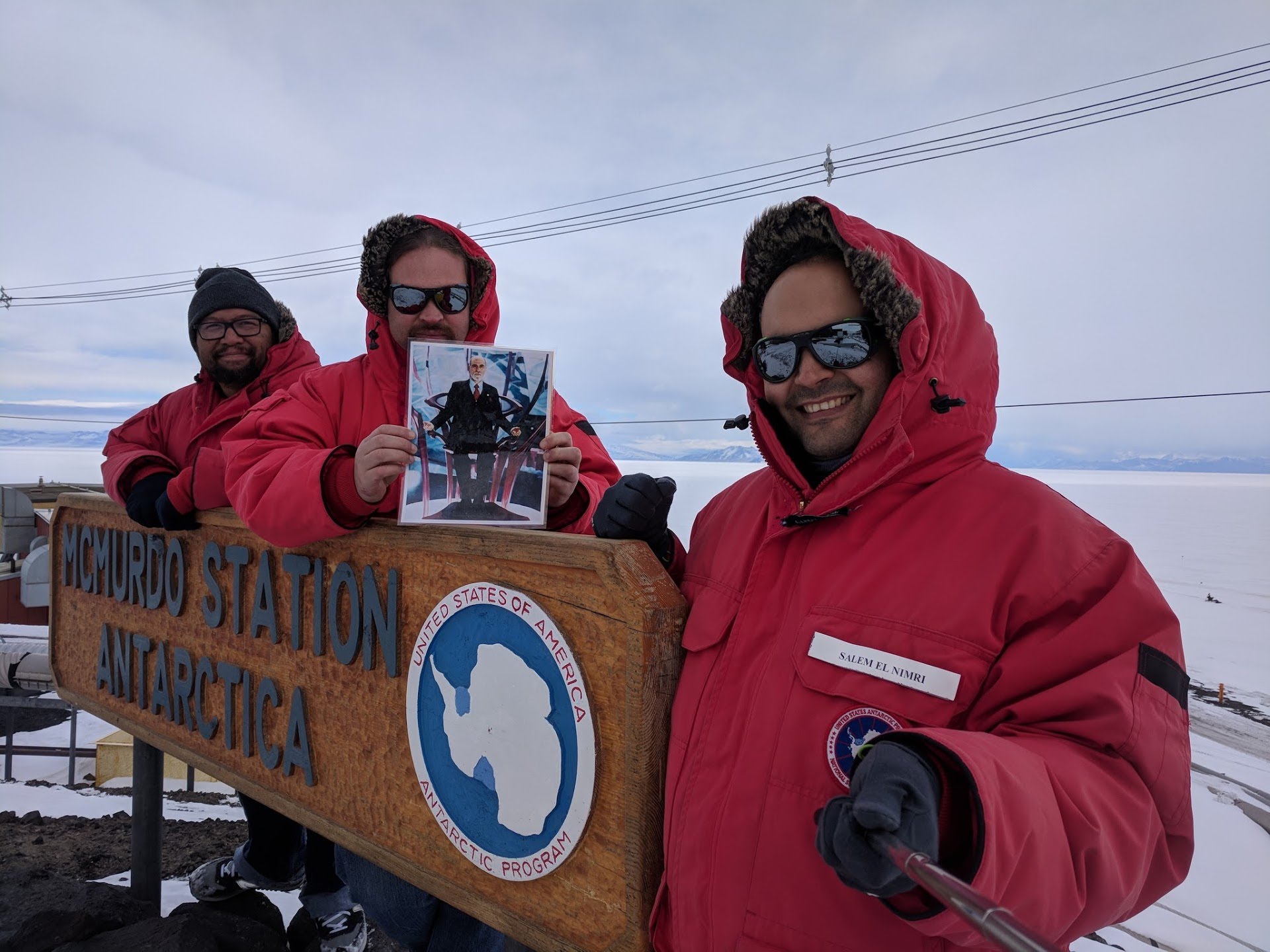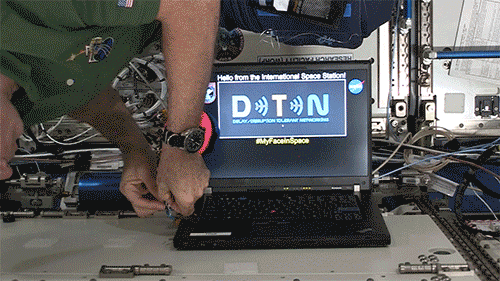Interplanetary-Internet Test Sends Antarctic Selfie to Space Station
A selfie sent from Antarctica to the International Space Station demonstrated an extra-robust communication network that promises to make an interplanetary internet more reliable. NASA announced the achievement on Monday (Nov. 27).
In space, wireless communication networks are critical. They function as a virtual tether, keeping astronauts and spacecraft in contact with Earth and each other. A network failure could leave something, or someone, dangerously cut off from the resources needed to survive. So far, space missions either directly communicate with Earth or go through only a single relay, like an orbiting satellite, making them especially vulnerable to this problem.
Introducing redundant pathways, in which a signal can get from one point to another in multiple ways, increases the resilience of a system, but this can be difficult to accomplish when a network is still small. What's more, the spacecraft that make up the network don't always have a clear view of each other, so a complete, or end-to-end, connection isn't always available, according to NASA. A traditional network requires an end-to-end path to transmit data. [Dial-Up Space Communications System Gets 'High-Speed' Upgrade]

Alternatively, each node in the network can temporarily store the data that goes through it and wait for the best moment to pass that data along. This kind of system, called disruption-tolerant networking (DTN), allows for small interruptions in connectivity without the loss of information, NASA said. The last node simply sends the remaining bundles of data once the connection has returned. Not only does this ensure that data isn't lost, but it also decreases the time needed to send and receive messages, as NASA illustrates in the video above.
Here's how the picture got from Antarctica to low-Earth orbit. On Nov. 20, NASA engineers took a selfie at the National Science Foundation's McMurdo Station in Antarctica. DTN software on a mobile phone sent the data from McMurdo ground station to NASA's White Sands Complex in New Mexico via the Tracking and Data Relay Satellite system, a constellation of communication satellites. From there, the data traveled through a series of DTN nodes, devices on the network, to NASA's Marshall Space Flight Center in Huntsville, Alabama, which is the access point to the DTN network aboard the space station, according to NASA.

Once the data was beamed up to the space station, it was routed to the Telescience Resource Kit (TReK) demonstration payload. The final DTN node then extracted the photo for the astronauts to see.
Unlike familiar computer-to-computer IP connections, disruption-tolerant networking accommodates temporary disruptions as well as long delays, NASA said in the Nov. 27 statement. These conditions happen in space, but they also occur in remote locations on Earth, like Antarctica, NASA said.
Get the Space.com Newsletter
Breaking space news, the latest updates on rocket launches, skywatching events and more!
"The Antarctic is an excellent analog for space operations," Patrick Smith, technology-development manager with the U.S. Antarctic Program, said in the statement. "Researchers are conducting important scientific investigations, operating in extreme conditions, with minimal infrastructure, so it's not surprising that we are using NASA space technology to advance science in the Antarctic."
The technology could also have applications in disaster zones, where connectivity is often limited, the statement said.
Email Harrison Tasoff at htasoff@space.com or follow him @harrisontasoff. Follow us @Spacedotcom, Facebook and Google+. Original article on Space.com.
Join our Space Forums to keep talking space on the latest missions, night sky and more! And if you have a news tip, correction or comment, let us know at: community@space.com.

Harrison Tasoff is a science journalist originally from Los Angeles. He graduated from NYU’s Science, Health, and Environmental Reporting Program after earning his B.A. in mathematics at Swarthmore College. Harrison covers an array of subjects, but often finds himself drawn to physics, ecology, and earth science stories. In his spare time, he enjoys tidepooling, mineral collecting, and tending native plants.









